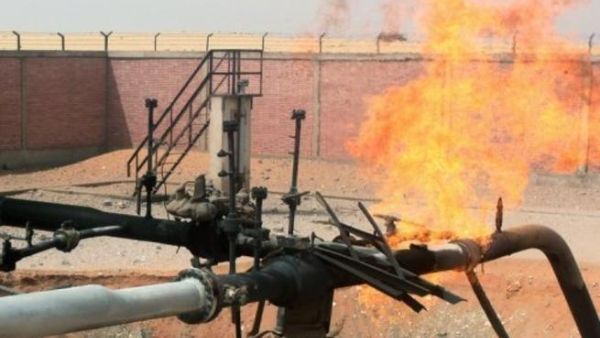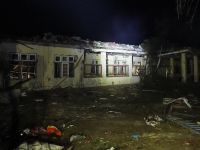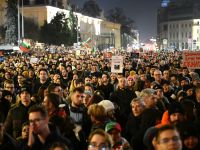For citizens of a country that imports 98 per cent of its energy needs, the notion of personal energy independence may seem like a far-fetched futuristic fantasy.
But due to advances in technology and local legislation, officials and experts now say energy self-sufficiency has become a reality in the Kingdom, with a “life off the grid” within reach of every Jordanian.
Green living sceptics can look no further for inspiration than the Jordan Renewable Energy Society’s (JRES) “green house”, one of the country’s first self-sustainable eco-buildings designed to inspire Jordanians to say goodbye to their electricity and water bills once and for all.
In designing the complex in the capital's northern suburb of Shafa Badran, the JRES said it took advantage of recent regulations passed by the government to foster green living across the Kingdom.
One of the most critical moves was a government decision to lift sales tax and customs duties on renewable energy technologies, a move that allowed the JRES to select among competitively priced solar panels for the building’s heating and electricity.
“Solar energy technology has not only become affordable, it has become too expensive to ignore it,” JRES Secretary General Mahmoud Al Taani told The Jordan Times.
A further inspiration to the design was a recently endorsed green building code, while the society is set to take advantage of a recent Cabinet decision paving the way for citizens to sell up to five megawatts of electricity back to the national grid to offset construction costs.
Due to these very regulations, energy officials say the country is set to witness a renewable energy “renaissance”.
“Now citizens can afford to purchase solar panels, cut their energy bill and even sell electricity back to the government,” said Energy Minister Alaa Batayneh.
“It is now a matter of when, not if, Jordan goes green.”
Instead of simple window glazing or solar panel installation, experts say the switch to green living requires a fundamental shift in the way families view their homes.
In order to move towards energy independence, experts say Jordanians must step away from their dependence on rented apartments or shared buildings, which due to poor insulation and lack of control of exterior environments prevent residents from truly “going green”.
“When you live in an apartment, you only control the space that is between your walls, which plays a very little role in sustainable living,” Taani said.
“If we really want energy-sufficient lives, we have to start considering living on our own.”
Rather than attempting to retrofit drafty apartments, the JRES advocates citizens build independent homes from the ground up, with each and every architectural tweak designed to take advantage of natural elements to reduce energy consumption.
While the idea of building a home from scratch may sound like a costly venture, green living advocates say the move quickly adds up to thousands of dinars in savings.
The instillation of vertical slanted windows, rather than customary broad windowpanes directly facing the sun, maximises natural sunlight and ventilation while minimising heat.
Details such as the width of a hallway, ceiling height and window spacing can result in a several degrees difference in temperature.
Once the initial “green building” blueprint is complete, home owners should move on to the second most important factor in an energy efficient home: proper insulation, according to the JRES.
Home owners should ditch the traditional cement and plaster in favour of natural, local stone, which advocates say has the dual positives of both being more affordable and better capable of retaining indoor temperatures.
“Our ancestors knew what they were doing when they built their homes out of stone — they were keeping themselves cool in the summer months and protected from the cold in the winter,” Taani said.
Properly applied, experts say interior and exterior stone siding will serve the job in 2012 as it did in 1812 — keeping rooms cool during the summer and preventing drafts in the winter.
“Once you have the home properly insulated, you have already cut over half your electricity costs,” Taani said.
With the home design fully adapted to take advantage of its natural surroundings, those preparing for a green life must then focus on the second phase: heating and lighting.
For the JRES green house, the society turned to solar energy, taking advantage of Jordan’s 330 annual days of sunshine by installing solar panels on its top floors and above its garden.
With four one-square-metre solar panels priced at $300 apiece, the society says it was quickly able to supply the house’s electricity needs, with the energy set to pay off its initial cost within five years.
“For a onetime investment, you get free electricity for up to 20 years,” Taani said.
‘That is a hard bargain to beat.”
And for those two-dozen odd cloudy winter days?
The JRES suggests home owners invest in solar battery cells that can provide three consecutive days of uninterrupted electricity supply should a single ray of sun fail to beam through.
With increased competition driving down prices of solar panels on the local market, the JRES says going solar has become an economic choice for all Jordanians, with a family now able to secure electricity for a 150-square-metre home for under $1,000.
But solar energy’s impact on the Kingdom’s green revolution doesn’t stop at heating or lighting. In designing their own “green home,” experts say citizens should consider bringing solar power into the kitchen.
With the advent of “solar grills” or “solar ovens”, people can serve up their favourite dishes or boil a pot of coffee without forking out cash on gas cylinders or electric stoves.
“With just a modest amount of sunlight, citizens can prepare any dish without having to spend a dime,” Taani said as he showcased solar ovens at the JRES “solar restaurant”.
In order to completely cut themselves off from public utilities, experts say green home owners can turn to treatment pumps to convert grey water and wastewater to irrigate plants, clean dishes and even wash clothes. The cost of the pumps ranges between JD1,000 and JD5,000.
More ambitious green pioneers can turn to rainwater harvesting systems to cache precipitation for showering, cooking and even drinking purposes.
“With the technology of the present and the know-how of the past, there is no reason for anyone to rely on the state for electricity or water,” Taani noted
“Independence is at our fingertips.”
The final price tag for an energy-independent green home? According to the JRES, its three-storey energy-independent eco-building cost JD88,000.
For green living advocates, it is a small price to pay for “freedom” and peace of mind.
“Instead of waiting for the government to solve our problems, we as Jordanians should set out to solve it ourselves,” Taani said.
“Renewable energy isn’t just about powering, it is empowering.”








